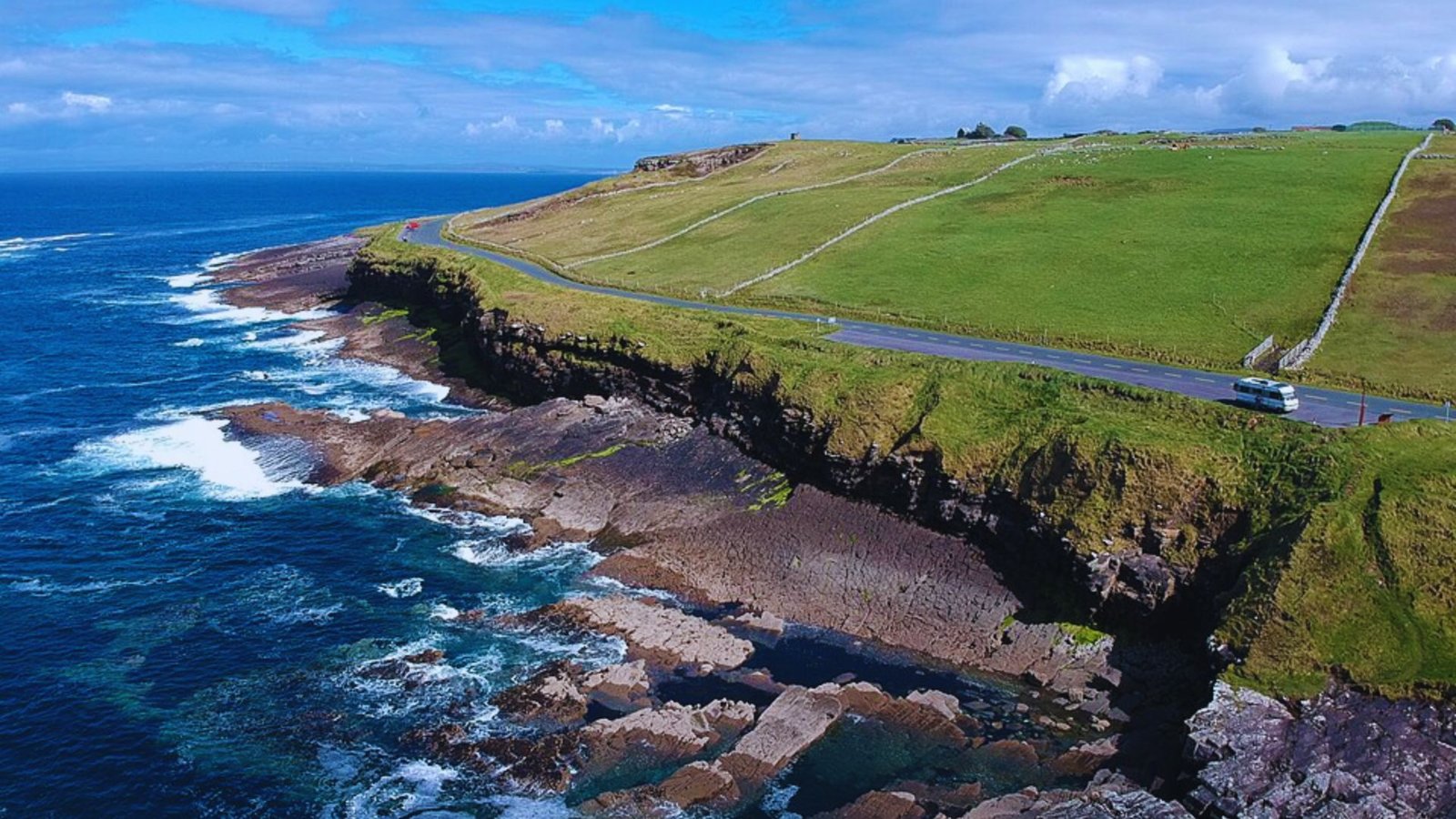Perched along the dramatic coastline of County Sligo, Mullaghmore Head is one of Ireland’s most breathtaking coastal destinations. Located on the iconic Wild Atlantic Way, this scenic headland offers panoramic ocean views, rugged cliffs, and an unmatched sense of natural beauty that draws in road trippers, photographers, and surfers alike.
I had the privilege of visiting Mullaghmore Head as part of my Sligo itinerary, and it quickly became one of the highlights of my trip. From the roar of the Atlantic waves to the stunning backdrop of Classiebawn Castle, every moment felt like stepping into a postcard.
Mullaghmore Head Useful Info
Location
Mullaghmore Head is located in County Sligo, along the scenic northwest coast of Ireland. Roughly a 30-minute drive north of Sligo Town, it’s easily accessible for those exploring the coastal beauty of the northwest.
I’ve included the Google Maps location below for easy navigation.
Parking
Parking at Mullaghmore Head is free and available mostly along the roadside near the harbour and coastal walk entrances. However, spaces are limited, so arriving early is recommended, especially during busy periods.
Mullaghmore Head Walk
The Mullaghmore Head Walk is a short but breathtaking coastal route that wraps around the peninsula, offering dramatic views of the Atlantic Ocean, towering cliffs, and distant mountain ranges like Benbulben.

It’s an easy, mostly flat walk suitable for all fitness levels, with plenty of scenic stopping points along the way for photos or quiet reflection.
One of the walk’s highlights is the view of Classiebawn Castle perched above the fields, framed perfectly against the Sligo landscape.
Surfing and Big Waves
Mullaghmore Head is world-famous for its colossal waves and is considered one of Europe’s premier big-wave surfing destinations. When conditions align—usually between October and March—the Atlantic swells can produce waves over 15 metres (50 feet) high. To check surf forecasts and reports, check this website.
Safety Tip: This spot isn’t for beginners; it’s reserved for experienced big-wave surfers who often use jet skis for tow-in surfing due to the sheer power and danger of the waves. Even if you’re not surfing, watching these athletes take on the monster waves from the safety of the headland is an unforgettable experience.
Scenic drive
The drive around Mullaghmore Peninsula is one of Ireland’s most stunning coastal routes, offering breathtaking views of the Atlantic Ocean, rugged cliffs, and rolling green hills.

As you follow the quiet R279 road, you’ll pass charming spots like Mullaghmore village and get sweeping vistas of Classiebawn Castle framed by the backdrop of Benbulben mountain, making it a perfect route for photographers and nature lovers alike.
Nearby Attractions
- Classiebawn Castle: Less than 5 minutes by car
- Streedagh Beach: About a 10-minute drive south
- Benbulben Mountain: Around a 25-minute drive southeast
- Glencar Waterfall: Approximately a 35-minute drive southeast
- Creevykeel Court Tomb: About a 15-minute drive east
- Lissadell House & Gardens: Roughly a 20-minute drive south
- Rosses Point: Around a 30-minute drive southeast
Frequently Asked Questions (FAQs)
Where is the Mullaghmore head?
Mullaghmore Head is located on the northwest coast of County Sligo, Ireland. It sits along the Wild Atlantic Way on the Mullaghmore Peninsula, about a 30-minute drive north of Sligo Town and just off the N15 road.
Why is Mullaghmore famous?
Mullaghmore is best known for its massive Atlantic waves, making it a world-renowned big-wave surfing destination. It’s also famous for its scenic coastal drive, dramatic cliffs, and views of Classiebawn Castle, as well as its connection to Irish and British history.
Is Mullaghmore worth visiting?
Absolutely. Mullaghmore offers a rare mix of natural beauty, thrill, and tranquillity—from breathtaking coastal walks and surfing spectacles to quiet harbor views.
Conclusion
Mullaghmore Head blends dramatic scenery, thrilling surf, and peaceful walks—making it a must-visit gem along Ireland’s stunning Wild Atlantic Way.
I hope this information will be helpful for your trip. If you plan to visit here, I would love to hear about your experience.




One Comment